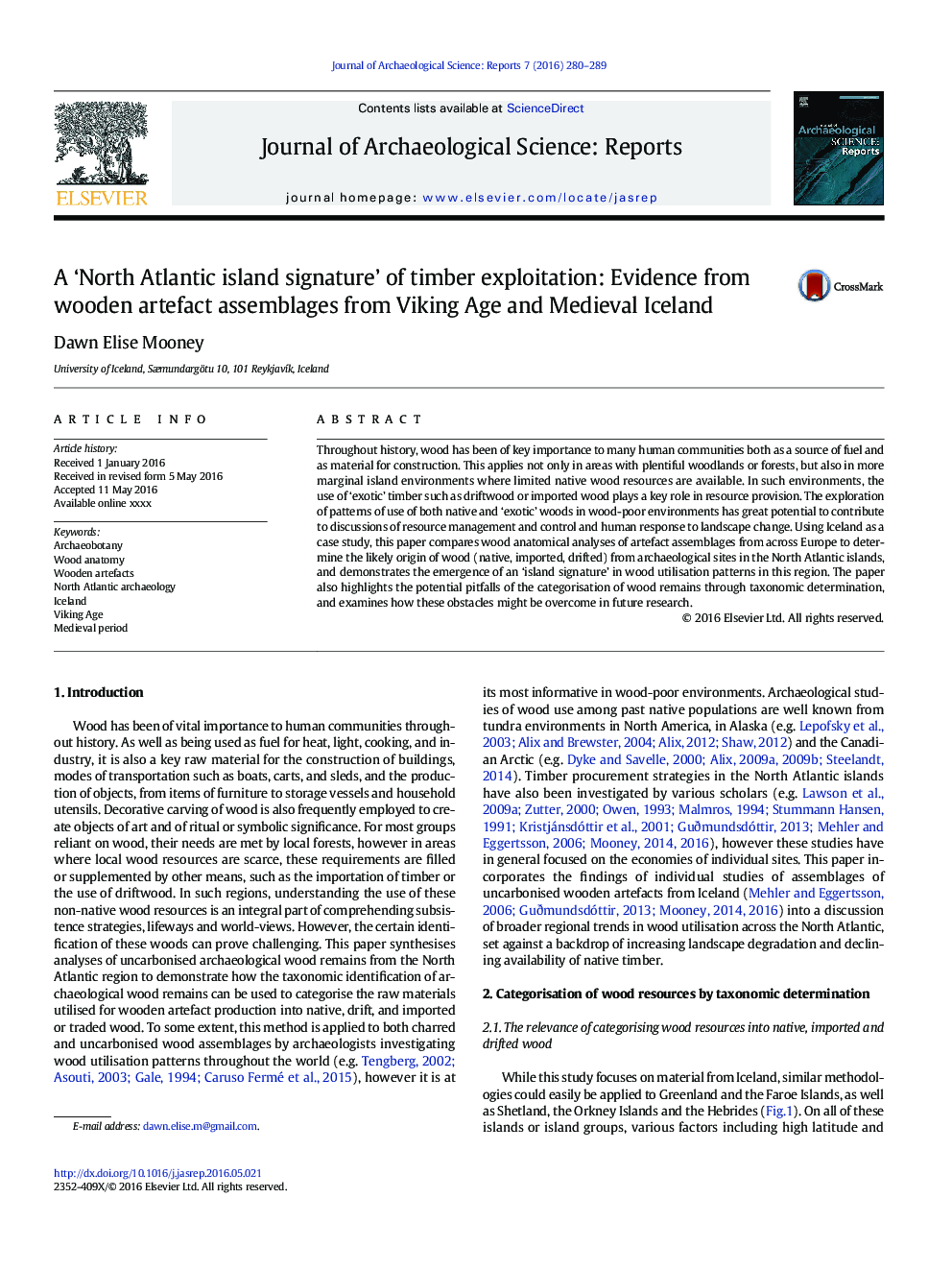| Article ID | Journal | Published Year | Pages | File Type |
|---|---|---|---|---|
| 7446550 | Journal of Archaeological Science: Reports | 2016 | 10 Pages |
Abstract
Throughout history, wood has been of key importance to many human communities both as a source of fuel and as material for construction. This applies not only in areas with plentiful woodlands or forests, but also in more marginal island environments where limited native wood resources are available. In such environments, the use of 'exotic' timber such as driftwood or imported wood plays a key role in resource provision. The exploration of patterns of use of both native and 'exotic' woods in wood-poor environments has great potential to contribute to discussions of resource management and control and human response to landscape change. Using Iceland as a case study, this paper compares wood anatomical analyses of artefact assemblages from across Europe to determine the likely origin of wood (native, imported, drifted) from archaeological sites in the North Atlantic islands, and demonstrates the emergence of an 'island signature' in wood utilisation patterns in this region. The paper also highlights the potential pitfalls of the categorisation of wood remains through taxonomic determination, and examines how these obstacles might be overcome in future research.
Related Topics
Social Sciences and Humanities
Arts and Humanities
History
Authors
Dawn Elise Mooney,
